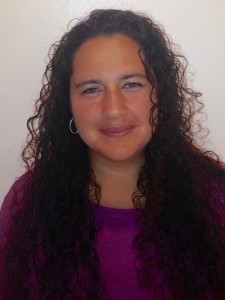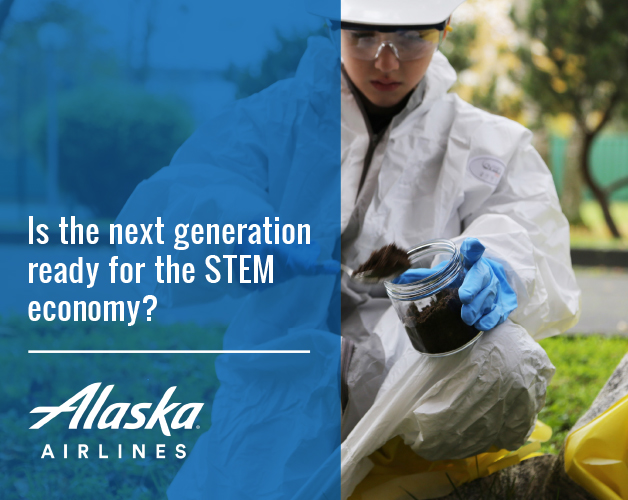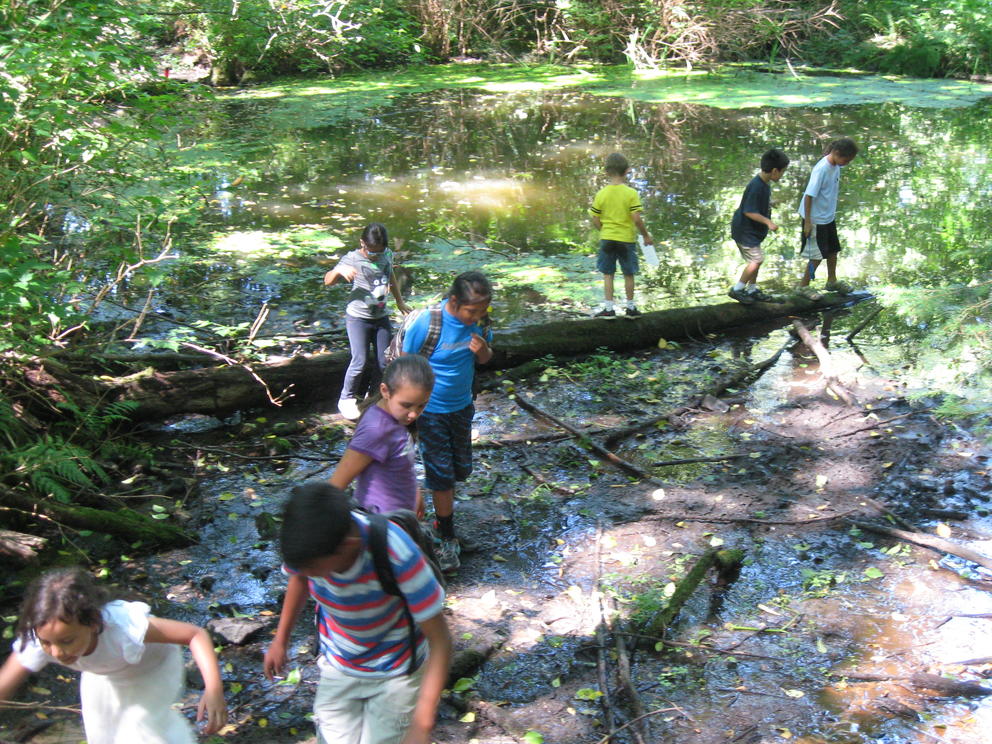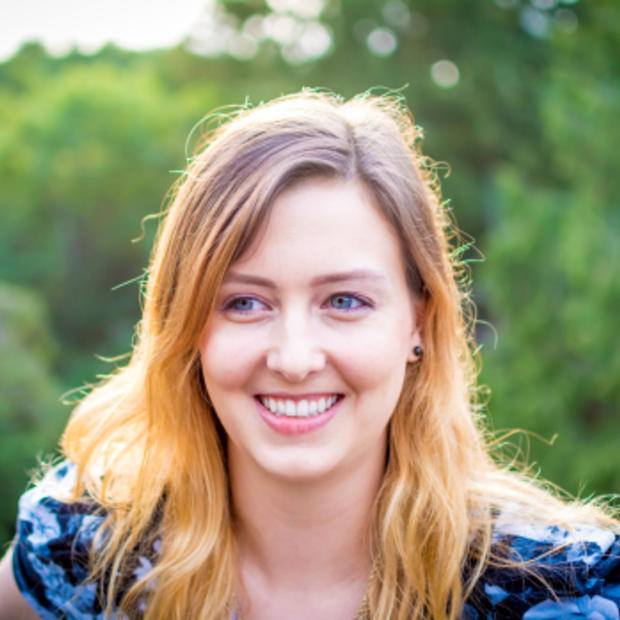What happens when what you're taught in school contradicts what you were taught by your family and community? The result can be a struggle to find the balance between preserving cultural identity and being successful in the world. It's a predicament that most Americans never have to face, but for indigenous youth, this struggle comes all too often.
The University of Washington's Megan Bang is trying to fix that through her work as an associate professor in the College of Education and Learning Sciences and Human Development, and affiliated faculty in American Indian Studies. It's an issue that hits home for her: "I'm Ojibwe on my mom's side and Italian on my dad's side. I identify as an urban Indian person."
While the U.S. education system often looks askance at native knowledge systems, Bang says traditional ways of knowing have much to offer. "Native people were the first scientists of North America and they were always making sense of natural phenomena," she says.
I sat down with her last week to ask her some questions about her work with STEM (science, technology, engineering and math) education, native communities and cultural identity. The following conversation has been edited for length and clarity.
Why did you choose to focus specifically on STEM education?
Because climate change is real… and in so many ways science education is the domain where people learn particular ways of understanding land and the natural world. And from an indigenous perspective that’s central to everything.
The second reason is that we have serious socio-scientific issues facing human communities and all the other life forms that we’ve screwed up, and so figuring out a science education that adequately prepares our next generation to take on those things... it feels really important to me.
What sparked your interest of working with Native people and historically underrepresented populations?
Often when we talk about equity we talk about it as an access and a representational issue, and really for me the heart of this is that there are different knowledge systems and ways of knowing natural phenomena.… Science has historically been a place in which particular ways of knowing count and others don’t.
I’ve been after both increasing the representation of non-dominant people in the sciences, and also doing it in ways that can honor multiple ways of knowing. Historically education has been a colonial force, and a force of trying to erase indigenous people, and so I come at science education in part from that.

What is the current state of STEM education for Native American students?
Seventy-eight percent of native children are in urban and suburban districts — not reservation schools — and so on some levels, the state of urban schools is how native kids are getting educated. Reservation schools often have even less funding than urban schools.
But most science education is not culturally responsive; it’s not located within people’s communities; it is not connected to native culture identity much at all. That’s not true for just native students, it’s true for all students of color and it also tends to be true for girls.
We’ve actually done some research where if you ask native kids whose parents are practicing scientists, “Who’s a scientist?” they’ll say white guys in lab coats. There’s a public image and public narrative about what science is and who scientists are that is really problematic and not representative of the field.
How can Tribal knowledge enrich our scientific understanding of the natural world?
To give an example, many Tribal communities have been on the front lines of understanding how ecosystems work, and for a long time, scientists didn’t really understand it... Washington seems to be really good about it, but it was Tribal communities that asked for salmon restoration and demanded that waters be cleaned up. Tribal communities thought about salmon restoration way before the state did. Tribal communities, and tribal ways of knowing, have recognized the necessary relationship between people and places for forever. It’s fundamental to knowing.
I can give you another example that I really am fascinated with: I think lots of Tribal people have always assumed that living things beyond humans had communicative capacity, and in the Western world that wasn’t true for a really long time. But what’s happening in botany and plant sciences now is that we now know that plants are communicating with each other through chemical signaling in ways that 15 years ago no one thought was possible.
We’ve done studies with younger [Native American] kids where they’ll tell you that their grandmas or grandpas will say things like water or rocks or the sun or the wind function like living things. But in a science classroom those things are natural, non-living things. If you look at the way Native kids reason about… these ideas that are not named legit in Western science, they actually look more like sophisticated scientists than non-native kids.
Do you think STEM education is currently geared more toward white/majority students?
I think there’s been a really big shift in the world, for research anyway, to recognize that many of the things we thought we knew about learning are based in really narrow samples and we haven’t actually studied the broad spectrum of how humans make sense. Most studies have been focused on white, middle-class folks and technologically saturated nations… and so schools have evolved with a privilege of particular ways of thinking, talking, and doing in the world.
It’s not just white students, it’s middle class. I think it’s really important to recognize that what is normalized is a classed thing, and it’s racialized, yes, but it’s also cultured. It’s also gendered, so there are reasons that most disciplines in science don’t have critical masses of women — white women even. This is happening for all kinds of reasons that are at the explicit bias level, but it’s also at the implicit bias level and the implicit valuing of some ways of knowing over others.
What are some differences between teaching white students and teaching Native students?
I think one of the major differences is whether or not teachers can locate their learning objectives in ways that are relevant to kids’ real lives. One of the things I think sometimes happens in non-dominant communities with teachers is that the assumption is that kids should want to leave their communities to get to a better life. It’s implicitly always suggesting that something is wrong with you and your family’s life now, or you and your community’s life.
So I think a really important place to start with culturally responsive education is for teachers to know kids, their families and communities well enough so they can make the phenomena relevant. Photosynthesis, for example, is not some off phenomenon that only happens in one place, but the way that kids come to understand photosynthesis... it’s this thing disconnected from their lives.
We run this summer camp, Summer Investigations, where kids learn all about climate change. Not only do they learn the traditional stories of how the Northwest came to be, and all of the different ocean species that have cultural importance, but they also learn, for example, what is ‘ocean acidification?’ And what is it that we need to do about it? And how does that impact our Tribal fisheries, for example? Or our Tribal economies?
Talk about some successes in your work with Native students.
I mean, we’ve done lots of work to demonstrate that we can, actually with really small interventions and changes in the way that teachers work with kids, get Native kids saying that ‘If this is the problem, I’ll go to my grandma to ask that question and I’ll also go to my teacher and I’ll also look to the internet or I’ll go ask a scientist.’ We’ve gotten kids to… see their communities and families as deep assets when solving those problems, and solving socio-scientific problems too.
One of the things that I think is really important is that I totally want all kids to master dominant knowledge right now, but I don’t want them to be dominated by it. What I mean by that is, normative science and Western ways of knowing are things that I think everyone needs to know at this point — I don’t not want kids to learn that. But I don’t want them to be dominated by it. And so for us, getting kids into the place where… Grandma counts as much as the guy with the PhD (assuming Grandma doesn’t have a PhD too) is a big win for us.
At the same time we can show that kids do better on standardized tests that are relevant to the kinds of interventions we’ve done. So I feel like those are huge successes.
Can you give me a specific success story?
One of the things we’ve done that’s really important: getting Native grown-ups talking to Native kids. We had a student, who we had been doing stuff with for a while, and then we brought in a Native scientist to do some soil-sampling. I remember we were doing it in a place that we had been harvesting plants, and so we had already made that context based in community practices. And this guy was explaining what he does for his job, and we had this 14-year-old kid who was like, “Wait a second, like, this is literally your job? This is what you do? I could be a scientist and check and see if our lands are healthy all the time, as a job…?”
And this [student] has gone on to college and now does that for a living. And part of it is literally making those connections and also putting role models in front of people to say that actually you can do this and you can become a scientist in a way that expresses your values and contributes to the well-being of your community.
How do you think UW is doing in terms of recruiting Native students into STEM majors?
I feel like the University has made steps and is making steps, and actually, compared to other universities in the country, UW does really well with Native students. That’s a pretty low bar though; Native people are horribly underrepresented in higher education. I think the last data I saw, we were like top ten in the country... and again, top ten with horrible underrepresentation.
I would say that the University still has a long way to go in being a place where Native students can learn and enhance their own ways of knowing, and not come and learn somebody else’s way. We have our American Indian Studies department doing great things and there’s actually really amazing scholarships happening on this campus around Indigenous peoples, both in North America and globally, but I don’t know how easy it is for Native students to find that when they get here.
With the College of Education, we’re doing better, but we have nearly no Native students in our teacher ed programs. We started a new certificate program this year called the Native Work and Education Certificate program, but it’s for in-service educators; it’s not for pre-service educators, and it reaches out to communities, and we have, you know, 68 students or something like that in the program, and half of them are native, and that’s pretty awesome.
But I think we have a long ways to go in making visible pathways, both to higher ed, and then back to community.
—
This series made possible with support from Alaska Airlines. The views and opinions expressed in the media, articles, or comments on this article are those of the authors and do not reflect or represent the views and opinions held by Alaska Airlines.



